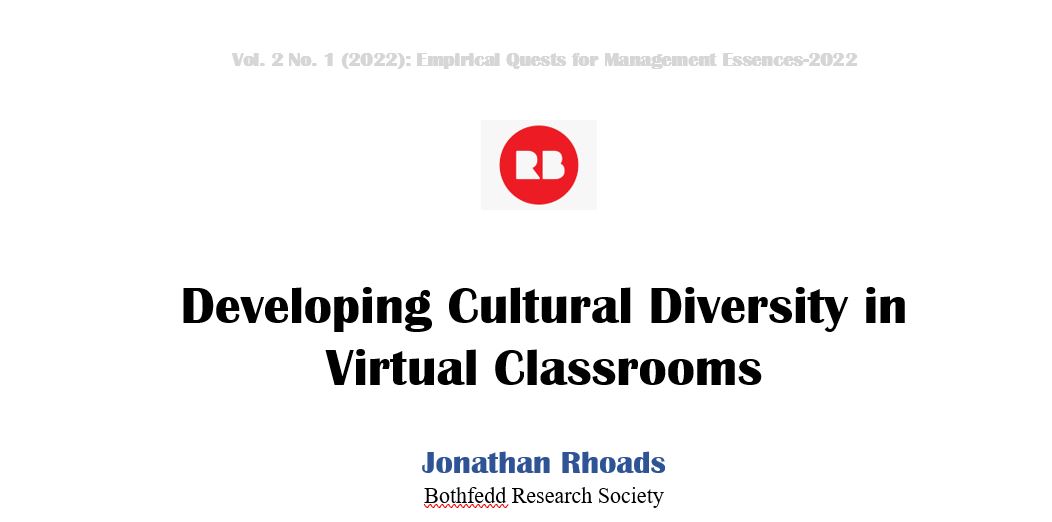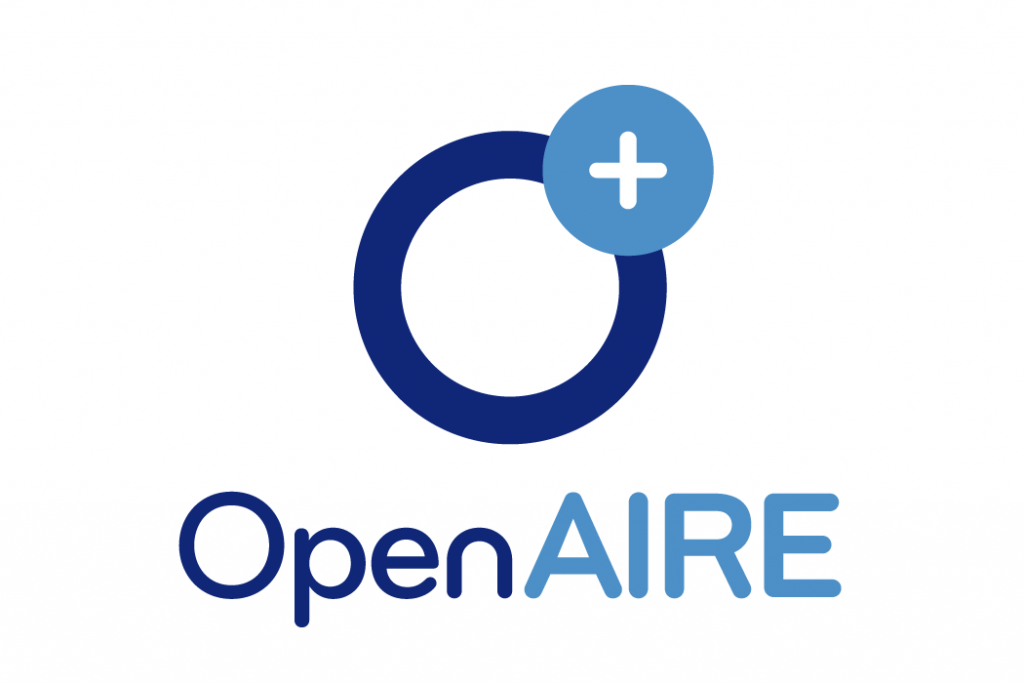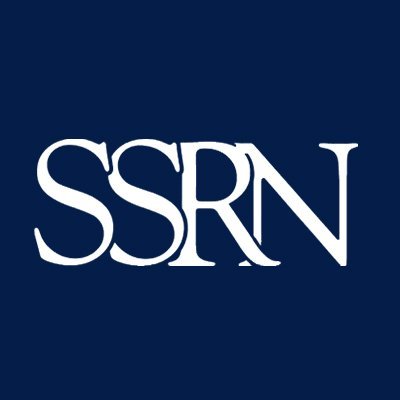Developing Cultural Diversity in Virtual Classrooms
Abstract
In recent years, online education has gained popularity. With the emergence of the COVID-19 epidemic, online learning has grown in importance as an alternative to conventional classrooms. As more education is delivered online, instructors must discover methods to build online settings that foster a sense of community and pleasant educational experiences for all students. This involves thinking about how to foster cultural diversity in the online classroom. Promoting cultural variety in the virtual classroom greatly enhances virtual learning. Finding successful approaches to foster cultural diversity in unconventional learning contexts, on the other hand, may be difficult. Educators need culturally sensitive teaching competence. A good grasp of the goals of culturally responsive education prepares and empowers educators to innovate in order to guarantee cultural diversity is embraced in their online classrooms.
References
J. Ryan, Leading diverse schools, vol. 2. Springer Science & Business Media, 2006.
E. V. Goethe and C. M. Colina, “Taking Advantage of Diversity within the Classroom,” J. Chem. Educ., vol. 95, no. 2, pp. 189–192, Feb. 2018.
D. L. Sturz, B. H. Kleiner, and A. Fernandez, “Effective management of cultural diversity in a classroom setting,” Equal Opportunities International, vol. 24, no. 5/6, pp. 57–64, Jan. 2005.
J. Juvonen, L. M. Lessard, R. Rastogi, H. L. Schacter, and D. S. Smith, “Promoting Social Inclusion in Educational Settings: Challenges and Opportunities,” Educ. Psychol., vol. 54, no. 4, pp. 250–270, Oct. 2019.
K. Varjas et al., “Bullying in Schools Towards Sexual Minority Youth,” J. Sch. Violence, vol. 7, no. 2, pp. 59–86, Feb. 2008.
J. Juvonen and S. Graham, “Bullying in schools: the power of bullies and the plight of victims,” Annu. Rev. Psychol., vol. 65, pp. 159–185, 2014.
Y. Pierre, N. K. Rathee, and V. S. Rathee, “Developing cross-cultural competency through multicultural perspective: An exploratory inquiry,” Eur. Sci. J., vol. 17, no. 27, p. 324, Aug. 2021.
B. B. Flores and H. L. Smith, “Teachers’ characteristics and attitudinal beliefs about linguistic and cultural diversity,” Biling. Res. J., vol. 31, no. 1–2, pp. 323–358, Mar. 2009.
Howard, “As diversity grows, so must we,” Educ. Leadersh., 2007.
G. Gay, “Teaching To and Through Cultural Diversity,” Curriculum Inquiry, vol. 43, no. 1, pp. 48–70, Jan. 2013.
R. Venketsamy, N. Sing, and L. Smart, “Teachers’ perceptions in creating an invitational learning environment in culturally diverse foundation phase classrooms,” Perspect. Educ., vol. 38, no. 2, Dec. 2020.
S. Trivedi and N. Patel, “The Role of Automation and Artificial Intelligence in Increasing the Sales Volume: Evidence from M, S, and, MM Regressions,” International Journal of Contemporary Financial Issues, vol. 3, no. 2, pp. 1–19, 2020.
V. S. Rathee, H. Sidky, and B. J. Sikora, “Role of associative charging in the entropy–energy balance of polyelectrolyte complexes,” Journal of the American, 2018.
A. S. R. Manstead, “The psychology of social class: How socioeconomic status impacts thought, feelings, and behaviour,” Br. J. Soc. Psychol., vol. 57, no. 2, pp. 267–291, Apr. 2018.
O. Kheiltash and V. D. Rust, “Inequalities in Iranian Education: Representations of Gender, Socioeconomic Status, Ethnic Diversity, and Religious Diversity in School Textbooks and Curricula,” in Inequality in Education: Comparative and International Perspectives, D. B. Holsinger and W. J. Jacob, Eds. Dordrecht: Springer Netherlands, 2009, pp. 392–416.
K. S. Cockrell, P. L. Placier, D. H. Cockrell, and J. N. Middleton, “Coming to terms with ‘diversity’ and ‘multiculturalism’ in teacher education: Learning about our students, changing our practice,” Teaching and Teacher Education, vol. 15, no. 4, pp. 351–366, May 1999.
B. N. Breyer, J. F. Smith, M. L. Eisenberg, K. A. Ando, T. S. Rowen, and A. W. Shindel, “The impact of sexual orientation on sexuality and sexual practices in North American medical students,” J. Sex. Med., vol. 7, no. 7, pp. 2391–2400, Jul. 2010.
M. Rock, T. S. Carlson, and C. R. McGeorge, “Does affirmative training matter? Assessing CFT students’ beliefs about sexual orientation and their level of affirmative training,” J. Marital Fam. Ther., vol. 36, no. 2, pp. 171–184, Apr. 2010.
N. Patel and S. Trivedi, “Leveraging Predictive Modeling, Machine Learning Personalization, NLP Customer Support, and AI Chatbots to Increase Customer Loyalty,” EQME, vol. 3, no. 3, pp. 1–24, Apr. 2020.
H. Sidky et al., “SSAGES: Software Suite for Advanced General Ensemble Simulations,” J. Chem. Phys., vol. 148, no. 4, p. 044104, Jan. 2018.
C. S. Pearson, “Women as Learners: Diversity and Educational Quality,” Journal of Developmental Education; Boone, N.C, vol. 16, no. 2, p. 2, 1992.
Evmenova, “Preparing teachers to use universal design for learning to support diverse learners,” Journal of Online Learning Research, 2018.
S. Laursen, C. Liston, H. Thiry, and J. Graf, “What Good Is a Scientist in the Classroom? Participant Outcomes and Program Design Features for a Short-Duration Science Outreach Intervention in K–12 Classrooms,” LSE, vol. 6, no. 1, pp. 49–64, Mar. 2007.
S. R. Komives, J. E. Owen, S. D. Longerbeam, F. C. Mainella, and L. Osteen, “Developing a Leadership Identity: A Grounded Theory,” J. Coll. Stud. Dev., vol. 46, no. 6, pp. 593–611, 2005.
A. J. B. Brush, B. Lee, R. Mahajan, S. Agarwal, S. Saroiu, and C. Dixon, “Home automation in the wild: challenges and opportunities,” in Proceedings of the SIGCHI Conference on Human Factors in Computing Systems, Vancouver, BC, Canada, 2011, pp. 2115–2124.
C. Hajisoteriou, C. Karousiou, and P. Angelides, “Successful components of school improvement in culturally diverse schools,” School Effectiveness and School Improvement, vol. 29, no. 1, pp. 91–112, Jan. 2018.
J. A. Banks, “Cultural diversity and education: Foundations, curriculum, and teaching,” 2015. [Online]. Available: https://www.academia.edu/download/31056987/ze_2006_372.pdf. [Accessed: 04-Aug-2022].
J. U. Ogbu, “Understanding cultural diversity and learning,” Educ. Res., 1992.
S. Trivedi and N. Patel, “The Impact of Artificial Intelligence Integration on Minimizing Patient Wait Time in Hospitals,” EQME, vol. 3, no. 1, pp. 21–35, 2020.
Castro Atwater, “Waking up to difference: Teachers, color-blindness, and the effects on students of color,” J. Instr. Psychol., 2008.
M. Hunter, “The persistent problem of colorism: Skin tone, status, and inequality,” Sociol. Compass, vol. 1, no. 1, pp. 237–254, Sep. 2007.
S. I. Coard, A. M. Breland, and P. Raskin, “Perceptions of and preferences for skin color, black racial identity, and self-esteem among African Americans1,” J. Appl. Soc. Psychol., vol. 31, no. 11, pp. 2256–2274, Nov. 2001.
V. S. Rathee, A. J. Zervoudakis, H. Sidky, B. J. Sikora, and J. K. Whitmer, “Weak polyelectrolyte complexation driven by associative charging,” J. Chem. Phys., vol. 148, no. 11, p. 114901, Mar. 2018.
H. R. Isaacs, Idols of the tribe: Group identity and political change. London, England: Harvard University Press, 1989.
E. Archuleta and J. Nagel, “American Indian ethnic renewal: Red power and the resurgence of identity and culture,” Rocky Mt. rev. lang. lit., vol. 51, no. 1, p. 102, 1997.
K. D. Haggerty and R. Jenkins, “Rethinking Ethnicity: Arguments and Explorations,” Can. J. Sociol., vol. 24, no. 2, p. 310, 1999.
A. Idham, “Factors affecting the men’s health literacy in Malaysia,” ScienceOpen Preprints, 28-Jun-2022.
Clément, “Ethnicity, contact and communicative competence in a second language,” Language , 1980.
R. Pat-El, H. Tillema, and S. W. M. van Koppen, “Effects of formative feedback on intrinsic motivation: Examining ethnic differences,” Learn. Individ. Differ., vol. 22, no. 4, pp. 449–454, Aug. 2012.
H. Elhoweris, K. Mutua, N. Alsheikh, and P. Holloway, “Effect of Children’s Ethnicity on Teachers’ Referral and Recommendation Decisions in Gifted and Talented Programs,” Remedial Spec. Educ., vol. 26, no. 1, pp. 25–31, Jan. 2005.
V. S. Rathee, H. Sidky, B. J. Sikora, and J. K. Whitmer, “Explicit Ion Effects on the Charge and Conformation of Weak Polyelectrolytes,” Polymers , vol. 11, no. 1, Jan. 2019.
C. Evans, “Religious Education in Public Schools: An International Human Rights Perspective,” Human Rights Law Review, vol. 8, no. 3, pp. 449–473, Aug. 2008.
C. Edward R, L. D. Furman, and H.-J. Canda, Spiritual diversity in social work practice: The heart of helping, 3rd ed. New York, NY: Oxford University Press, 2019.
S. Trivedi and N. Patel, “Clustering Students Based on Virtual Learning Engagement, Digital Skills, and E-learning Infrastructure: Applications of K-means, DBSCAN, Hierarchical, and Affinity Propagation Clustering,” SSRET, vol. 3, no. 1, pp. 1–13, 2020.
R. B. Balfanz, “The Importance of Being in School: A Report on Absenteeism in the Nation’s Public Schools,” The Education Digest; Ann Arbor, vol. 78, no. 2, search.proquest.com, pp. 4–9, Oct-2012.
B. Comber, P. Thomson, and M. Wells, “Critical literacy finds a ‘place’: Writing and social action in a low-income Australian grade 2/3 classroom,” Elem. Sch. J., vol. 101, no. 4, pp. 451–464, Mar. 2001.
J. M. Smith and J. C. Lucena, “Invisible innovators: how low-income, first-generation students use their funds of knowledge to belong in engineering,” Eng. Stud., vol. 8, no. 1, pp. 1–26, Jan. 2016.
S. Trivedi, “Improving students’ retention using machine learning: Impacts and implications,” ScienceOpen Preprints, 11-Jun-2022.
J. C. Garvey and S. R. Rankin, “Making the Grade? Classroom Climate for LGBTQ Students Across Gender Conformity,” J. Stud. Aff. Res. Pract., vol. 52, no. 2, pp. 190–203, Apr. 2015.
S. T. Russell, M. D. Bishop, V. C. Saba, I. James, and S. Ioverno, “Promoting School Safety for LGBTQ and All Students,” Policy Insights Behav Brain Sci, vol. 8, no. 2, pp. 160–166, Oct. 2021.
V. S. Rathee, S. Qu, W. A. Phillip, and J. K. Whitmer, “A coarse-grained thermodynamic model for the predictive engineering of valence-selective membranes,” Molecular Systems Design, 2016.
K. L. Seelman, M. R. Woodford, and Z. Nicolazzo, “Victimization and Microaggressions Targeting LGBTQ College Students: Gender Identity As a Moderator of Psychological Distress,” J. Ethn. Cult. Divers. Soc. Work, vol. 26, no. 1–2, pp. 112–125, Jan. 2017.
J. L. Linley, D. Nguyen, G. B. Brazelton, B. Becker, K. Renn, and M. Woodford, “Faculty as Sources of Support for LGBTQ College Students,” College Teaching, vol. 64, no. 2, pp. 55–63, Apr. 2016.
A. Idham, “The determinants of divorce in Malaysia: The role of ED, ethnicity, and religion,” ScienceOpen Preprints, 28-Jun-2022.
B. J. Shade, etc., C. Kelly, and M. Oberg, Creating culturally responsive classrooms, vol. 168. Washington, D.C., DC: American Psychological Association, 1997.
G. Cartledge and L. Kourea, “Culturally Responsive Classrooms for Culturally Diverse Students with and at Risk for Disabilities,” Except. Child., vol. 74, no. 3, pp. 351–371, Apr. 2008.
D. Y. Ford, “Multicultural issues: Culturally responsive classrooms: Affirming culturally different gifted students,” Gift. Child Today, vol. 33, no. 1, pp. 50–53, Jan. 2010.
N. Patel, S. Trivedi, and J. M. Chatterjee, “Cmbatting COVID-19: Artificial Intelligence Technologies & Challenges,” ScienceOpen Preprints, 13-Jul-2022.
Faitar, “Building culturally responsive classrooms,” Int. J. Educ. Policy Res. Rev., 2011.
Rahmawati and Ridwan, “Empowering students’ chemistry learning: The integration of ethnochemistry in culturally responsive teaching,” Chemistry: Bulgarian Journal of, 2017.
D. W. Chen, J. Nimmo, and H. Fraser, “Becoming a Culturally Responsive Early Childhood Educator: A Tool to Support Reflection by Teachers Embarking on the Anti-Bias Journey,” Multicultural Perspectives, vol. 11, no. 2, pp. 101–106, Jul. 2009.
E. S. O’Leary et al., “Creating inclusive classrooms by engaging STEM faculty in culturally responsive teaching workshops,” Int J STEM Educ, vol. 7, no. 1, p. 32, Jul. 2020.
A. Idham, “Impact of Diabetes and Hypertension Control on Work Performance among Employees in Malaysia,” RRST, vol. 2, no. 1, pp. 1–15, Jun. 2022.
S. V. Taylor and D. M. Sobel, Culturally responsive pedagogy: Teaching like our students’ lives matter, vol. 4. Brill, 2011.
S. Kim and A. Slapac, “Culturally Responsive, Transformative Pedagogy in the Transnational Era: Critical Perspectives,” Educ. Stud., vol. 51, no. 1, pp. 17–27, Jan. 2015.
N. S. K. M. Alam, “Struggling with Digital Pandemic: Students’ Narratives about Adapting to Online Learning at Home during the COVID-19 Outbreak,” 2021.
C. Hammond and Others, “Culturally responsive teaching in the Japanese classroom: A comparative analysis of cultural teaching and learning styles in Japan and the United States,” 2007.
J. Martins-Shannon and M. White, “Support Culturally Responsive Teaching!,” Kappa Delta Pi Record, vol. 48, no. 1, pp. 4–6, Jan. 2012.
Rathee and Rathee, “Concentration, Reactive-Proactive Aggression, Non-verbal Aggression, and Wellness among Video Games Playing Adolescents,” Int. J. High Risk Behav. Addict., 2014.
L. Rychly and E. Graves, “Teacher Characteristics for Culturally Responsive Pedagogy,” Multicultural Perspectives, vol. 14, no. 1, pp. 44–49, Jan. 2012.
Idham, “The Impact of Erectile Dysfunction on Husband’s and Wife’s Quality of life: A Study on Malaysia,” Empirical Quests for Management Essences, 2022.
J. R. Considine, J. E. Mihalick, Y. R. Mogi-Hein, M. W. Penick-Parks, and P. M. Van Auken, “‘Who am I to bring diversity into the classroom?’ Learning communities wrestle with creating inclusive college classrooms,” JoSoTL, pp. 18–30, Aug. 2014.
S. B. Hopper, “Bringing the World to the Classroom through Videoconferencing and Project-based Learning,” TechTrends, vol. 58, no. 3, pp. 78–89, May 2014.
E. R. Cole, K. A. Case, D. Rios, and N. Curtin, “Understanding what students bring to the classroom: moderators of the effects of diversity courses on student attitudes,” Cultur. Divers. Ethnic Minor. Psychol., vol. 17, no. 4, pp. 397–405, Oct. 2011.
Colombo, “Reflections from teachers of culturally diverse children,” Young Children. Beyond the Jour nal, 2005.
M. Cochran-Smith and S. L. Lytle, “Interrogating Cultural Diversity: Inquiry and Action,” J. Teach. Educ., vol. 43, no. 2, pp. 104–115, Mar. 1992.
J. J. Hurley, A. Medici, E. Stewart, and Z. Cohen, “Supporting Preschoolers and Their Families who are Recently Resettled Refugees,” Multicultural Perspectives, vol. 13, no. 3, pp. 160–166, Jul. 2011.
S. V. Bennett, A. A. Gunn, G. Gayle-Evans, E. S. Barrera, and C. B. Leung, “Culturally Responsive Literacy Practices in an Early Childhood Community,” Early Childhood Education Journal, vol. 46, no. 2, pp. 241–248, Mar. 2018.
T. Dreher, “Listening across difference: Media and multiculturalism beyond the politics of voice,” Continuum, vol. 23, no. 4, pp. 445–458, Aug. 2009.
G. Gay, “Preparing for Culturally Responsive Teaching,” J. Teach. Educ., vol. 53, no. 2, pp. 106–116, Mar. 2002.
W. C. Parker, Teaching Democracy: Unity and diversity in public life. Teacher’s College Press, 2003.
S. R. Logan, D. C. Watson, Y. Hood, and T. A. Lasswell, “Multicultural Inclusion of Lesbian and Gay Literature Themes in Elementary Classrooms,” Equity Excell. Educ., vol. 49, no. 3, pp. 380–393, Jul. 2016.
G. Flores, “Toward a More Inclusive Multicultural Education: Methods for Including LGBT Themes in K-12 Classrooms,” Am. J. Sex. Educ., vol. 7, no. 3, pp. 187–197, Jul. 2012.
T. M. Singelis, Teaching about culture, ethnicity, and diversity: Exercises and planned activities. Thousand Oaks, CA: SAGE Publications, 1998.
P. B. Pedersen, “110 experiences for multicultural learning,” vol. 317, no. 110, 2004.
M. Frenn and S. Malin, “Diet and exercise in low-income culturally diverse middle school students,” Public Health Nurs., vol. 20, no. 5, pp. 361–368, Sep. 2003.
K. W. H. Tai, “Translanguaging as Inclusive Pedagogical Practices in English-Medium Instruction Science and Mathematics Classrooms for Linguistically and Culturally Diverse Students,” Research in Science Education, vol. 52, no. 3, pp. 975–1012, Jun. 2022.
J. Wang, “Culturally inclusive practice: A case study of an international student support initiative at an Australian university,” Asian Soc. Sci., vol. 8, no. 4, Mar. 2012.
D. K. Markey, D. B. O’ Brien, D. C. Kouta, C. Okantey, and D. C. O’ Donnell, “Embracing classroom cultural diversity: Innovations for nurturing inclusive intercultural learning and culturally responsive teaching,” Teaching and Learning in Nursing, vol. 16, no. 3, pp. 258–262, Jul. 2021.
V. S. Rathee, B. J. Sikora, and H. Sidky, “Simulating the thermodynamics of charging in weak polyelectrolytes: the Debye–Hückel limit,” Mater. Res., 2018.
K. Kimmel and S. Volet, “University students’ perceptions of and attitudes towards culturally diverse group work,” J. Stud. Int. Educ., vol. 16, no. 2, pp. 157–181, May 2012.
P. L. Tiedt and I. M. Tiedt, Multicultural Teaching. A Handbook of Activities, Information, and Resources. Fourth Edition. Allyn and Bacon, 160 Gould Street, Needham, MA 02194., 1995.
A. Omeri, P. Malcolm, M. Ahern, and B. Wellington, “Meeting the challenges of cultural diversity in the academic setting,” Nurse Educ. Pract., vol. 3, no. 1, pp. 5–22, Mar. 2003.
Ukpokodu, “How do I teach mathematics in a culturally responsive way?: Identifying empowering teaching practices,” Multicult. Educ., 2011.
C. Weinstein, M. Curran, and S. Tomlinson-Clarke, “Culturally Responsive Classroom Management: Awareness Into Action,” Theory Pract., vol. 42, no. 4, pp. 269–276, Nov. 2003.
H. M. Shandomo, “Getting to knew you: cross-cultural pen pals expand children’s world view,” Childhood Education, 2009.
G. M. Thompson McMillon, “Pen Pals Without Borders: A Cultural Exchange of Teaching and Learning,” Educ. Urban Soc., vol. 42, no. 1, pp. 119–135, Nov. 2009.
M. H. Hill, “International pen pals engaging in a transformational early childhood project,” search.proquest.com, 2012.
B. R. Hefflin, “Learning to Develop Culturally Relevant Pedagogy: A Lesson About Cornrowed Lives,” Urban Rev., vol. 34, no. 3, pp. 231–250, Sep. 2002.
Kratzke and Bertolo, “ENHANCING STUDENTS’CULTURAL COMPETENCE USING CROSS-CULTURAL EXPERIENTIAL LEARNING,” J. Cult. Divers., 2013.
D. Y. Ford and D. A. Harmon, “Equity and Excellence: Providing Access to Gifted Education for Culturally Diverse Students,” Journal of Secondary Gifted Education, vol. 12, no. 3, pp. 141–147, Feb. 2001.
A. E. Du Plessis, “Barriers to effective management of diversity in classroom contexts: The out-of-field teaching phenomenon,” Int. J. Educ. Res., vol. 93, pp. 136–152, Jan. 2019.
M. E. Curran, “Linguistic Diversity and Classroom Management,” Theory Pract., vol. 42, no. 4, pp. 334–340, Nov. 2003.
D. Swallow, “Managing diversity in the classroom,” Training, Language and Culture, vol. 4, no. 2, pp. 67–80, 2020.
Yusof, “Multicultural education: managing diversity in Malaysian schools,” Malaysian Education Deans Council Journal, 2008.
H. R. Milner and F. B. Tenore, “Classroom Management in Diverse Classrooms,” Urban Education, vol. 45, no. 5, pp. 560–603, Sep. 2010.
Flores and García, “Linguistic third spaces in education: Teachers’ translanguaging across the bilingual continuum,” Managing diversity in education: Key issues, 2013.
C. Rothstein-Fisch and E. Trumbull, Managing diverse classrooms: How to build on students’ cultural strengths. ASCD, 2008.
R. A. Giacalone and J. W. Beard, “Impression Management, Diversity, and International Management,” Am. Behav. Sci., vol. 37, no. 5, pp. 621–636, Mar. 1994.
S. Hymel and J. Katz, “Designing Classrooms for Diversity: Fostering Social Inclusion,” Educ. Psychol., vol. 54, no. 4, pp. 331–339, Oct. 2019.
J. Shindler, Transformative classroom management: Positive strategies to engage all students and promote a psychology of success. London, England: Jossey-Bass, 2009.
N. C. N. Igu, F. N. Ogba, and E. Nwinyinya, “Managing Diversity in Schools: The Pedagogical Imperatives of Recognition and Respect for the Cultural Individuality of Learners,” in Implementing Culturally Responsive Practices in Education, IGI Global, 2020, pp. 195–210.
R. Shobe, “Respecting Diversity: A Classroom Management Technique A Survey of Incarcerated Adult Students,” Journal of Correctional Education, vol. 54, no. 2, pp. 60–64, 2003.
Condy, Chigona, Gachago, and Ivala, “Pre-Service Students’ Perceptions and Experiences of Digital Storytelling in Diverse Classrooms,” Turk. Online J. Des. Art Commun., 2012.
D. R. Avery and K. M. Thomas, “Blending Content and Contact: The Roles of Diversity Curriculum and Campus Heterogeneity in Fostering Diversity Management Competency,” AMLE, vol. 3, no. 4, pp. 380–396, Dec. 2004.
N. Rubaii-Barrett, “Teaching Courses on Managing Diversity: Using Learning Contracts to Address Challenges and Model Behavior,” Journal of Public Affairs Education, vol. 12, no. 3, pp. 361–383, Sep. 2006.
E. M. Plionis and H. J. Lewis, “Teaching cultural diversity and oppression,” J. Teach. Soc. Work, vol. 12, no. 1–2, pp. 175–192, Mar. 1996.
V. Masemann, “Living in diversity: Lesson plans for secondary schools,” Int. Rev. Educ., vol. 58, no. 3, pp. 429–430, Jun. 2012.
Wilson, “Managing diversity in the classroom,” Teaching in Post-Compulsory Education, 2013.
Lemmer and Meier, “Initial teacher education for managing diversity in South African schools: A case study,” Journal of Educational Studies, 2011.
M.-L. Hung, C. Chou, C.-H. Chen, and Z.-Y. Own, “Learner readiness for online learning: Scale development and student perceptions,” Comput. Educ., vol. 55, no. 3, pp. 1080–1090, Nov. 2010.
S. M. Pliner and J. R. Johnson, “Historical, Theoretical, and Foundational Principles of Universal Instructional Design in Higher Education,” Equity Excell. Educ., vol. 37, no. 2, pp. 105–113, Jun. 2004.
T. Wanner and E. Palmer, “Personalising learning: Exploring student and teacher perceptions about flexible learning and assessment in a flipped university course,” Comput. Educ., vol. 88, pp. 354–369, Oct. 2015.
M. Alam and C. Y. Hoon, “Digidemic and Students’ Hysteresis During Online Learning,” Globalisation, Education, and Reform in Brunei, 2021.
Piedra and Yudintseva, “Teaching in the Virtual Classroom: Strategies for Success,” J. At. Mol. Phys., 2020.
C. Kavrayici, “The relationship between classroom management and sense of classroom community in graduate virtual classrooms,” Turk. Online J. Distance Educ., pp. 112–125, Mar. 2021.
Hiltz, “Teaching in a virtual classroom,” journal of educational telecommunications, 1995.
M. Mendes de Oliveira, Z. Sporn, L. Kliemann, A. Borschke, and M. Meyering, “Online language learning and workplace communication: a study on Babbel’s virtual-classroom solution,” Comput. Assist. Lang. Learn., pp. 1–26, Dec. 2021.
R. M. Palloff and K. Pratt, Lessons from the virtual classroom: The realities of online teaching, 2nd ed. London, England: Jossey-Bass, 2013.
B. B. Thomas, “The virtual classroom experience,” in 33rd Annual Frontiers in Education, 2003. FIE 2003., 2003, vol. 3, pp. S2F-1.
Kaosaiyaporn, Atisabda, and Plodkaew, “Factors of virtual classroom to enhance online learning in multicultural society for pre-service teacher students,” JITA - J. Inf. Technol. Appl. (Banja Luka) - APEIRON, 2015.
L. S. Neuwirth and S. Jović, “Reimagining higher education during and post-COVID-19: Challenges and opportunities,” Journal of Adult and, 2021.
Y. Park and I.-H. Jo, “Using log variables in a learning management system to evaluate learning activity using the lens of activity theory,” Assessment & Evaluation in Higher Education, vol. 42, no. 4, pp. 531–547, May 2017.
Scordias, “Virtual classroom visits,” Society for Information Technology & Teacher, 2007.
K. L. Guthrie and H. McCracken, “Teaching and learning social justice through online service-learning courses,” The International Review of Research in Open and Distributed Learning, vol. 11, no. 3, pp. 78–94, Oct. 2010.
R. M. Palloff and K. Pratt, Building online learning communities: Effective strategies for the virtual classroom, 2nd ed. London, England: Jossey-Bass, 2007.
E. Melis, E. Andres, and J. Büdenbender, “ActiveMath: A generic and adaptive web-based learning environment,” Journal of Artificial …, 2001.
Fahy, “Characteristics of interactive online learning media,” The theory and practice of online learning, 2008.

Downloads
Published
How to Cite
Issue
Section
License
Copyright (c) 2022 Author

This work is licensed under a Creative Commons Attribution-NonCommercial-NoDerivatives 4.0 International License.
Creative Commons licenses are used to publish Open Access articles, which provide the legal basis for users to access, distribute, and reuse the content. EQME allows authors to apply one of the following Creative Commons licenses to their work, each of which affords readers distinct rights in terms of commercial use and the capacity to create derivative versions:
CC-BY (Creative Commons Attribution License)
CC-BY-NC-ND (Creative Commons Non-Commercial No Derivatives License)
CC-BY-NC-SA (Creative Commons Non-Commercial Share-a-like)
In each situation, the creator must be given credit, and if derivative versions of the work are created, the alterations must be noted.






